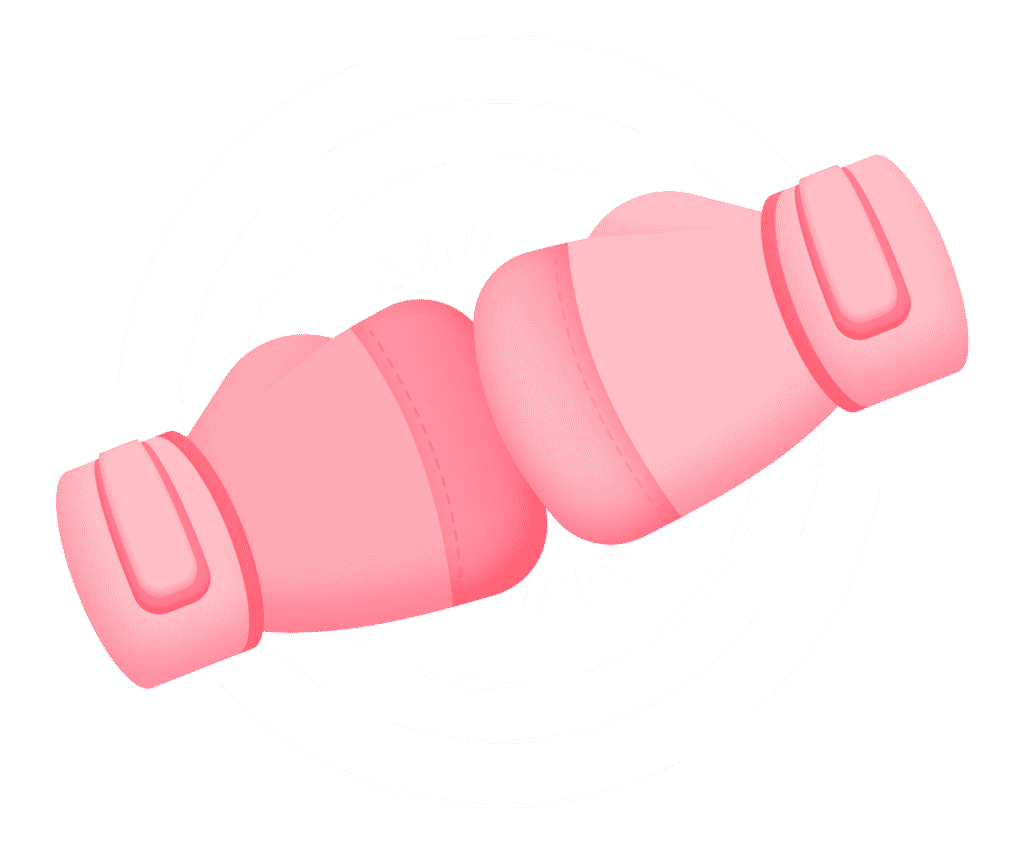Why Your Sales Performance Is Shit and What You Should Do About It

If you have arrived here, you at least believe that your sales performance could be better. That is true for most companies.
Bad sales results can be a self-defeating spiral. Loss of confidence is infectious and counterproductive to your outcomes. The expectation of failure can lock you into bad habits.
This is a guide to some of the common mistakes made by sales and marketing teams, and steps you can take to improve outcomes. We will look at this issue from the perspective of both individual salespersons and the organisation.
Why Your Sales Performance Is Shit: Bad Sales Reps
The most granular level at which your sales performance can fail is bad sales representatives. Anyone working on the front line of sales has to look at themselves, how they approach the job, the skills that they have and the techniques that they use.
What to Do:
As a struggling sales representative, you need to make sure you are bringing everything to the table. As a sales manager, you need to think about the skill and commitment of your staff, and develop the behaviour of your best performing team members in your worst. To be a quality sales rep, you need to:
Have The Right Attitude
Sales reps routinely face failure, this has to be looked at as an opportunity. Think about failure as a way to learn lessons you can apply to future hard decisions. Keep an ongoing list that documents how and why sales fall apart. Take pride in your failures, they built the skills you currently have.
Do Your Homework
To sell something, you need to understand it. To do it well, you need to understand your audience. The more you know, the better. Too much jargon or too technical an explanation could be confusing. Too much background or too many analogies could leave an informed prospect thinking you wasted their time.
You need to guide a prospect through your portfolio and align them with products or services that best suit their needs. You need to be able to frame what you do in a context that makes sense to them. To have the best shot at impressing a potential customer, you need to know as much about them and their business as possible.
Have a Plan
You need strategies in place to generate leads and a plan for how to engage contacts repeatedly and over time. Think about different sales methodologies to employ. This plan should be tested against results and modified accordingly.
You also need to be flexible. You want a basic set of proven guidelines. However, you need to respond to feedback from leads in order to best place them on a sales trajectory. Think about deploying strategies tailored to specific personas within your target market audience.

Why Your Sales Performance Is Shit: An Overreliance on Technology
The number of technological choices available makes it hard to avoid oversaturation of gadgetry and software. This can lead to counterproductive outcomes, even if money is not wasted in the acquisition. This, however, is a pretty easy thing to solve.
What to Do
Start a policy that will assess the strategic implementation of technology before you implement it. Remember that technology is not, itself, a strategy.
In order to maintain a healthy relationship with technology undertake annual or bi-annual technology audits. Make sure that you don’t have redundant and competing solutions that are wasting your time. Look at:
- Which tools are being actively used vs. sitting dormant?
- Assess the delivery of success based on measured KPIs.
- How tools have changed in measurable utility since the last audit.
- Do tools duplicate capabilities offered by others within your technology stack?
Don’t waste money paying per-user fees for services you barely use or that have been made redundant by free tools or the capabilities of other software packages. Most organisations don’t need more than one CRM (Customer Relationship Management) system. If you have multiple teams operating on different workflow platforms such as Slack, Trello, Basecamp and Asana, you will waste time and cause confusion.
Why Your Sales Performance Is Shit: You Don’t Understand Sales Methodologies
The sales process is specialised and distributed. You need different people working on different aspects of the ‘sales funnel’ to support each other. Planning is important on an individual level. To be truly effective, individual plans need to be supported by team architecture.
To develop a sales strategy you need to start by taking stock of your sales methodology. A sales methodology is the framework by which you approach sales. This is different from the individual steps you take when engaging with a lead – that is your sales process. Your sales methodology will guide how you approach each step in your overarching sales strategy.
What to Do
You need to research and test different sales methodologies to pick those best suited to your business. You should consider operating multiple methodologies simultaneously.
The two large categories of sales methodologies are ‘inbound’ and ‘outbound’. Inbound methodologies are about drawing customers to you. This includes mass advertising, content marketing, social media, your website and SEO/pay-per-click techniques.
Outbound methodologies are about reaching out and engaging customers in a dialogue. They are differentiated by their approaches to that exchange. For example, a sales representative can attempt to befriend potential clients, they can attempt to teach potential clients, or enable clients to go on a journey of self-discovery. There are dozens of ‘named’ outbound sales methodologies. These include NEAT Selling, SPIN Selling, the Challenger Sale, the Sandler System and Conceptual Selling.
The strategic level decision you need to make is about how much of an emphasis you should place on inbound sales and at what point to actively engage leads with outbound methodologies. Then you need to look at what inbound and outbound techniques best suit your business and different personas within your target market audience.
For more information about sales methodologies and how they differ, look here.
Why Your Sales Performance Is Shit: You Don’t Have a Sales Process
The real nuts and bolts of your sales strategy is your ‘sales process’. This is the guideline of steps you plan to take in order to generate leads, turn those leads into prospects, and turn those prospects into customers.
You want to create a repeatable and scalable sales journey that will generate a sufficient conversion rate for the cost, and maintain sustainable lead generation. You also need a system that is flexible and alterable.
What to Do
You need to apply a broader understanding of sales methodologies to the context of what has worked historically for business. If starting from scratch, you will have to look at industry benchmarks in order to get started. That information should also be consulted if looking to improve outcomes. However, the most specific information about your business comes from your business. Here are 6 steps to improving your ‘sales process’:
Step 1: Look at What is Working
Go back over your most recent sales and look at what happened. On what channels did the leads originate? How were the customers contacted, how often, and how long did the entire sale take? What sales methodologies were employed? How much time elapsed between each step in the process?
Then look at personas. Who is buying your products or services? Is it the same type of person across your portfolio, or do certain products have a particular target market audiences?

Step 2: Establish a Baseline of Success
Once you establish a timeline for each successful sale, you can look for commonalities. Use those similarities to generate a ‘generic timeline’ of your average successful sale. That can either be across your company, individual products or individual people. In every case, this allows you to work backwards and establish a blueprint estimate for best practice.
Step 3: Define the Stages of Your Sales Funnel and Identify the Most Successful Triggers for Progression
Segregate your average timeline into stages. Look in detail at the commonalities of what progressed a lead at each successive stage, or led the deal to fall apart. You ideally want to investigate the cause based on the actions of a prospect.
Ask questions like:
- What were the pain points identified through outreach that motivated a prospect to schedule a follow-up?
- During a demo, what objections stalled the deal? What features enabled a sale?
Step 4: Place Those Results in the Context of Failure
Once you know what good looks like, see how it differs from failure. Are there discernible differences (over which you have control) between the sales journeys that resulted in a new customer and those that fell apart?
Do the successes and failures of individual sales reps provide insight into what works and what does not? If certain sales reps have a higher conversion rate, look to see if they are doing something different and transferable that your lower performing sales reps are leaving out.
Step 5: Develop a Process and Methodology
Take the information you have and standardise best practices. You want to look at recreating the most successful overall strategy and the implementation of particular techniques at each individual stage. Take consideration to tailor aspects of your plan to different identified personas and different products. Make sure sales reps understand the need to be flexible based on outcomes.
On a basic level, what is important is outlining what works and what doesn’t. This allows you to train staff on sales methodologies, and create a rudimentary sales process that seeks to duplicate the journey taken by leads that ended up becoming customers. Maximise investment in the channels that have originated the highest quality leads.
Step 6: Continue Improvements Through Iteration
Maintaining and improving your sales process requires trial and error. Continue to gather information on what is working and what is not. Use that to iterate new variations of your best practice methodologies and processes to hone the system. Occasionally, trial totally different ideas. Continually reassess the metrics of what works and accommodate your practices to take advantage of change.
Summary: Your Sales Performance is Shit Because You Don’t Pay Enough Attention to What You Do
You need to take stock of your sales methodologies, processes and people. Then look at how your marketing and sales teams work together and develop a plan that takes maximum advantage of the resources and opportunities you have.
Remember that effective sales are about creating reliable leads and following through in a repeatable, scalable and flexible process. Too much reliance on technology will miss the basics of what is important. You need good sales reps working together to support every aspect of your sales funnel. This takes planning, assessment and iteration. Sales is a journey, not a state. That applies to your customers and your team.
For more information about sales methodologies, look here.
For more information about how to use B2B inbound marketing channels, look here.
Reach Your Revenue Goals. Grow MRR with Gripped.
Discover how Gripped can help drive more trial sign-ups, secure quality demos with decision makers and maximise your marketing budget.
Here's what you'll get:
- Helpful advice and guidance
- No sales pitches or nonsense
- No obligations or commitments



Book your free digital marketing review
Other Articles you maybe interested in
How to Align Sales and Marketing Teams
Is your sales and marketing relationship broken? So you’re a marketer, and it’s tough meeting the expectations of your sales team. Or you’re a salesperson, and you’re struggling to understand why marketing keeps misfiring. Firstly, don’t worry it’s not a unique situation – it’s standard and its the primary reason that holds back sales and…
SDR vs BDR Sales: What’s the Difference?
The roles within sales and marketing departments can often overlap and be confusing. Across industries, but particularly in SaaS, tech and B2B if roles are not clearly defined and all cogs in your sales and marketing machine aren’t well oiled, your lead generation might stutter. A Business Development Representative, or BDR, is a classic example…
How to Reduce Customer Churn for Your Subscription-Based Business?
Most business owners find a revolving pattern in their subscription-based business. People enter your business model, indulge with your services for a while, and then lose interest or drift away. Customer retention is one of the biggest challenges, especially for subscription-based/SaaS businesses. It becomes more of a concern if you charge recurring fees, be it…


